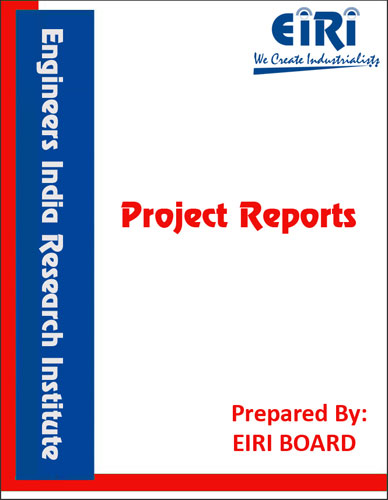The project report includes Present Market Position and Expected Future Demand, Market Size, Statistics, Trends, SWOT Analysis and Forecasts. Report provides a comprehensive analysis from industry covering detailed reporting and evaluates the position of the industry by providing insights to the SWOT analysis of the industry.
Semolina is the coarse purified wheat middlings of durum wheat. The term semolina is also used to designate coarse middling from other varieties of wheat and from other grain such as maize.
Corn is the cereal with the highest production worldwide and is used for human consumption, livestock feed, and fuel. Various food technologies are currently used for processing industrially produced maize flours and corn meals in different parts of the world to obtain precooked refined maize flour, dehydrated nixtamalized flour, fermented maize flours, and other maize products. These products have different intrinsic vitamin and mineral contents, and their processing follows different pathways from raw grain to the consumer final product, which entail changes in nutrient composition. Dry maize mechanical processing creates whole or fractionated products, separated by anatomical features such as bran, germ, and endosperm. Wet maize processing separates by chemical compound classification such as starch and protein. Various industrial processes, including whole grain, dry milling fractionation, and nixtamalization.
Maize food products can be processed at home on a small local scale as well as on a larger industrial scale, transforming the raw material into food products.
Some of the products are more suitable for commercial trade because they require further processing or provide convenience and extended shelf life, while other products should be consumed immediately after production. For example, degerminated corn grits, meal, or flour has an extended shelf life and can be moved and traded easily. The product itself has to be further processed, including some degree of cooking, in order for it to be palatable as a food product.
Nixtamalized maize, when prepared in the household or by a small-scale processor, is typically used to form ready-to-eat finished masa products with a limited shelf life. On an industrial scale, nixtamalized maize flour may be processed and sold as a shelf-stable product that can be prepared for consumption in the home, reducing meal preparation time and providing convenience. Industrial processors strive to offer maize products that replicate the ones consumed in the target market region. Identifying the market share of industrially produced maize product consumed in the market place is essential in evaluating the potential for implementing a successful maize product fortification program. The influence of a small-scale maize processing industry with local impact may also play a significant role in some target populations, especially in some poor countries.
Maize color is important to specific consumer groups in Central and South America as well as in Africa, and white maize is preferred for food consumption.
In some areas of the world, such as North America, the desired color depends on the region or the food use. For example, in the eastern United States, cornmeal, grits, and homily are white, while in the northern part of the country, maize meal, and maize products used for breakfast cereals and snack foods are expected to be manufactured with yellow maize.
Maize meal or flour composition can also be driven by regional preferences, with some preferring whole ground maize rather than degerminated or partially degerminated maize products. The nutrient composition, including vitamins, minerals, and antinutrient factors, are influenced by local product preferences, which include not only the way the corn product is consumed, but also what other food items or additives are part of a complete meal. Local and regional standards for both the form and composition are to be evaluated as part of planning a maize flour or cornmeal fortification program.
INTRODUCTION
USES AND APPLICATION
MAIZE KERNEL ANATOMY AND COMPOSITION
SPECIFICATION OF MAIZE SEMOLINA
CORN GRITS AND SEMOLINA
MARKET SURVEY
OVERVIEW OF SNACK MARKET
PRESENT MANUFACTURERS OF MAIZE SEMOLINA
CORN MILL PRODUCTS & BY-PRODUCTS
METHOD OF MAIZE SEMOLINA PROCESSING
PROCESS FLOW DIAGRAM
METHOD OF MAIZE PROCESSING
FEATURES AND YIELD OF DRY MILLING PROCESS
DRY MILLING OF MAIZE
SWOT ANALYSIS OF MAIZE PROCESSING IN KARNATAKA
PRINCIPLES OF PLANT LAYOUT
PLANT LOCATION FACTORS
EXPLANATION OF TERMS USED IN THE PROJECT REPORT
PROJECT IMPLEMENTATION SCHEDULES
SUPPLIERS OF PLANT AND MACHINERY
SUPPLIERS OF RAW MATERIALS
APPENDIX – A:
1. COST OF PLANT ECONOMICS
2. LAND & BUILDING
3. PLANT AND MACHINERY
4. FIXED CAPITAL INVESTMENT
5. RAW MATERIAL
6. SALARY AND WAGES
7. UTILITIES AND OVERHEADS
8. TOTAL WORKING CAPITAL
9. COST OF PRODUCTION
10. PROFITABILITY ANALYSIS
11. BREAK EVEN POINT
12. RESOURCES OF FINANCE
13. INTEREST CHART
14. DEPRECIATION CHART
15. CASH FLOW STATEMENT
16. PROJECTED BALANCE SHEET



